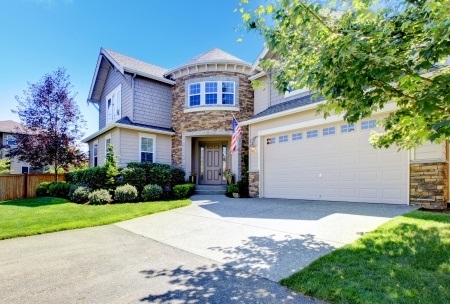3 Mortgage Mistakes That Could Be Costing You Money
 Purchasing a home can be one of the most exciting and stabilizing investments of your life, but because of the expense, there are many ways you may be spending more money than you should. If you’re wondering about the financial soundness of your home investment, here are some things to consider before putting anything down.
Purchasing a home can be one of the most exciting and stabilizing investments of your life, but because of the expense, there are many ways you may be spending more money than you should. If you’re wondering about the financial soundness of your home investment, here are some things to consider before putting anything down.
Investing In Too Much Home
Many homebuyers are so gung-ho about having their own home that they forget a mortgage takes many years to pay off and there’s a lot of living to do in the interim. While you may be looking at the monthly cost of your mortgage as something to get through, it’s more important to find a home that will provide you with a more flexible lifestyle. Instead of spending half your income on your home, it’s better to choose a more affordable option that won’t lead to buyer’s remorse.
Putting Less Than 20% Down
One of the greatest struggles for those who want to make the leap into home ownership is the down payment, and many buyers will put down a lot less than 20%. While this might seem like a better deal in the short term, putting 5 or 10% down means you’ll have to pay for mortgage insurance in case you default on your payments. It can be hard to come up with 20% for many buyers, but putting this amount down means you don’t have to pay for added insurance.
Not Asking The Right Questions
A house is likely your most valuable asset, so it’s a good idea to know as much as possible about your mortgage before you rush toward closing day. Starting with asking which mortgage option is best for you. Your mortgage lender will be able to answer this question once you’ve completed an application and the lender takes stock of your employment, income, assets, credit, debt, expenses, down payment and other information about your finances. Research the major questions you should ask your mortgage lender before signing up for a loan.
It can be overwhelming to buy a home with all of the information and energy that goes into finding the right place and the right price. However, by being realistic about what you can afford and searching for the best loan for you, you’re well on your way to a sound purchase. If you’re currently on the market for a mortgage, contact your trusted mortgage specialists for more information.

 As the mortgage market has become more competitive, it has become a more common choice for many people to choose a mortgage broker to assist them with the lending process. While it’s great to have someone to help you with the fine details, there are some important differences between what a mortgage broker does and what you might think they do, so here are some things to be aware of.
As the mortgage market has become more competitive, it has become a more common choice for many people to choose a mortgage broker to assist them with the lending process. While it’s great to have someone to help you with the fine details, there are some important differences between what a mortgage broker does and what you might think they do, so here are some things to be aware of. Last week’s economic news included minutes from the most recent meeting of the Fed’s Federal Open Market Committee (FOMC) along with several reports on private and public sector employment and the national unemployment rate. Weekly reports on mortgage rates and new jobless claims were also released.
Last week’s economic news included minutes from the most recent meeting of the Fed’s Federal Open Market Committee (FOMC) along with several reports on private and public sector employment and the national unemployment rate. Weekly reports on mortgage rates and new jobless claims were also released.